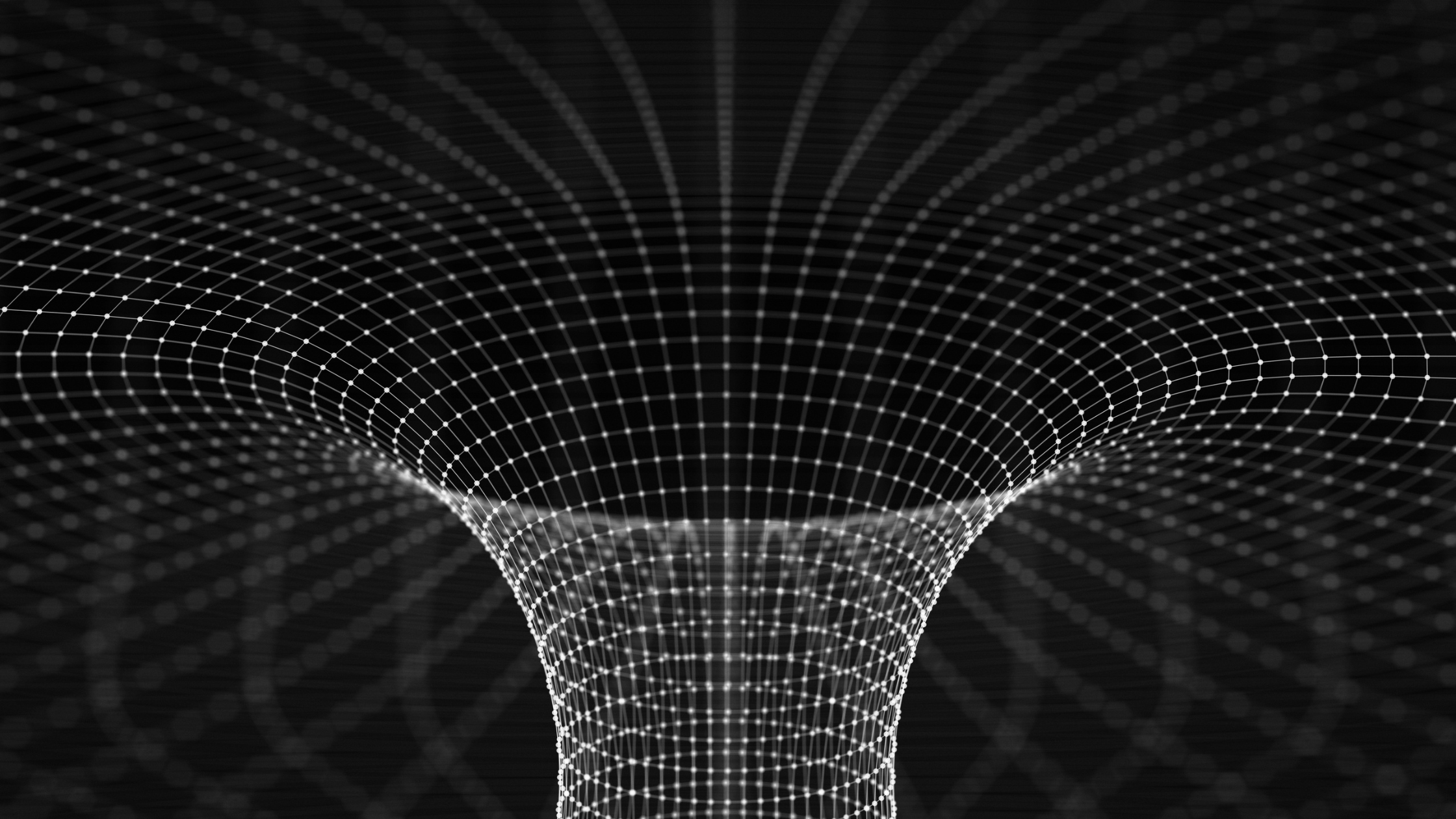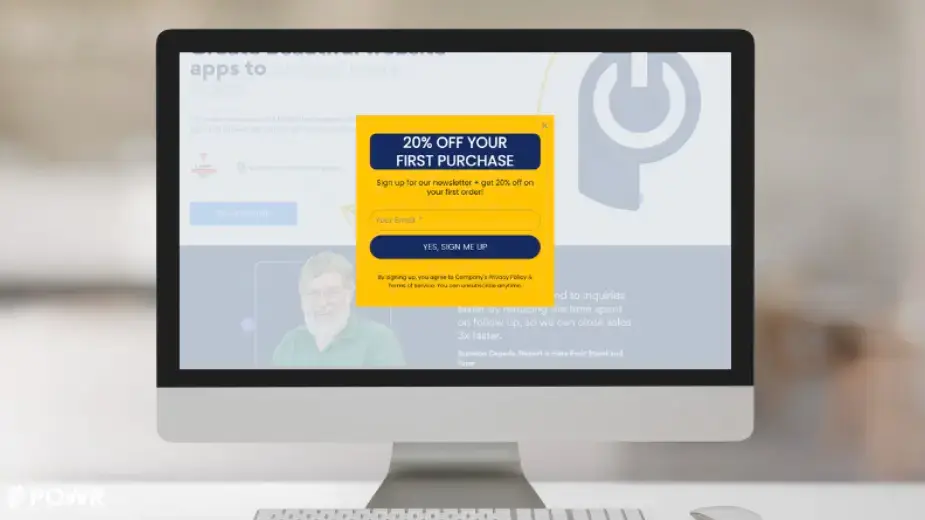If you own a business or run a marketing department, you’ve probably heard of both the buyer’s journey and funnel marketing before. But how deeply do you understand its value?
And more importantly, do you know how to build them for yourself? Small business owners -- pay close attention and read this article all the way through.
Table of Contents:
- What is the digital customer journey?
- What is lower funnel marketing?
- What is POWR One?
- Lower Funnel Stages Explained
- Conclusion
Research shows that only 3% of prospects are ready to buy now. So how can you speak to the other 97% in the meantime?

Created in Canva by author
By presenting them with accurate information, they need to make an informed purchase decision at the proper buyer journey stage.
You can accomplish it and win new business by clearly understanding your customer’s purchase journey and optimizing your lower-funnel marketing.
What is the Digital Customer Journey?
The digital customer journey is the path a person takes online, from becoming aware that your company or product exists to becoming a loyal customer.
Put another way; it’s "never heard of them" to "this is the best company on the planet, you should buy from them too." It’s not an easy feat, and major brands spend millions of dollars daily trying to control it.
Search Google for ‘customer journey,’ ‘purchase funnel,’ or other buzzword combinations, and you’ll get various results that essentially are the same.
One that’s growing in popularity is the AIDA stages, or Awareness, Interest, Decision, and Action.
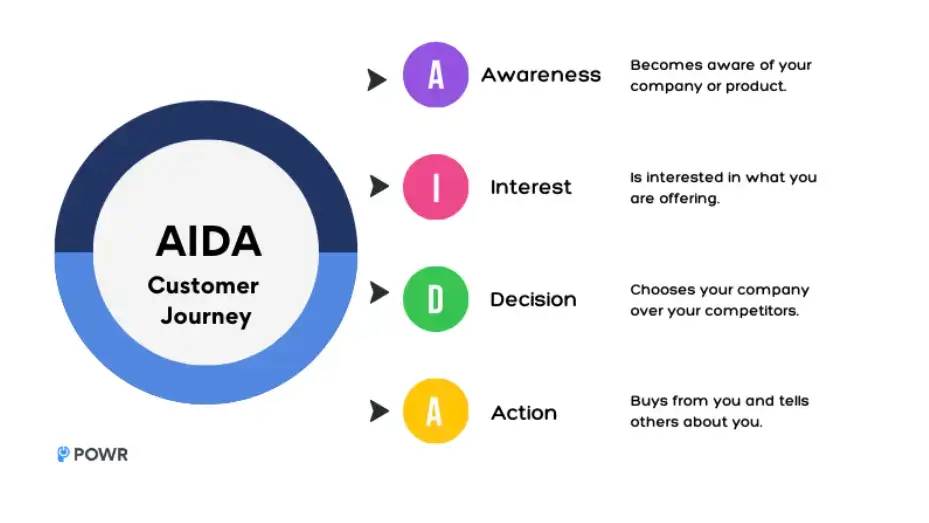
Created in Canva by author
Regardless of their names, they are the different stages of the funnel every person takes to become your customer.
Each stage of the consumer purchase funnel brings different challenges, strategies, funnel content, and data tracking.
The better you know your ideal customer, the more effective the top of your purchase funnel will be. You must understand their desires, motivations, and fears.
The closer you can match and mimic their thought process, the more you can tap into customer psychology to get them to take the actions you need to increase sales.
This article will detail the lower funnel stages and show how POWR One can optimize your lower funnel's marketing efforts, leading to more conversions and improving customer loyalty.
What is Lower Funnel Marketing?
Lower funnel marketing (sometimes called bottom funnel) refers to the end of the purchase journey or the stages of the funnel where decisions happen.
The primary goal in the lower funnel is conversions. Sales. Revenue. Call it what you want, but you hope the time and money you’ve spent to get consumers interested in your product or service will ultimately pay off here.

Created in Figma by author
Of all the stages of the funnel, the lower section, also called BOF (bottom-of-funnel), is where the site visitor must now choose, “Do I buy from this company?”
You’ve succeeded in making them aware of your company, and they’re considering buying from you, but how do you get them to click “Buy Now”?
To stack the deck in your favor, you must ensure you fully optimize your website or online store so site visitors see what they need to see when they need to see it to decide that your company is the one to choose.
As Brett McHale, founder of Empiric Marketing, put it,
"As far as low-funnel marketing is concerned, in-product engagement reigns supreme."
So how do you do that? Glad you asked! Each section in the remainder of this article are all in-product engagement tactics you can do without needing a web developer's help.

Created in Figma by author
What is POWR One?
POWR One is an all-in-one suite of website apps built to address and impact the bottom of the purchase funnel and to enrich conversion funnel optimization to the max, so you can focus more on the productivity of your small business.
Creating and installing the proper assets improves your chances of moving a site visitor down the funnel, resulting in a happy, loyal customer.
POWR One helps you maintain proper lead funnel management while keeping your website loading time very low, which is always a delightful user experience.
Lower Funnel Stages Explained
As a small business owner, it's important to use marketing tactics that efficiently convert site visitors into paying customers.
Digital marketing and SEO expert Neil Patel says,
"Marketers spend tons of time and resources driving traffic to their landing pages, hoping the target audience joins the opt-in process.
However, you’re wasting your time if these destinations don’t entice prospective customers into your sales funnel and educate and convert them into customers."
A lower funnel approach can be highly effective in achieving this goal. By targeting individuals who are most likely to make a purchase in the near future, you can maximize conversions and increase your overall return on investment (ROI).
Funnel Stage - Intent
In this stage, your goal is to get a site visitor to take an action that shows they are more than just interested; they intend to buy from you.
It can be done by installing website apps like a popup or a contact form where you ask them to give you more information about themselves.
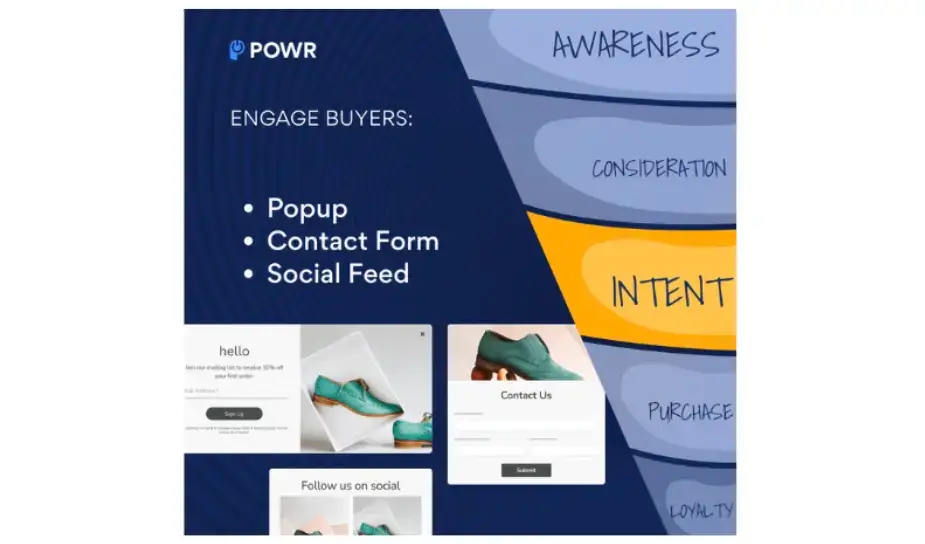
Created in Figma by author
-
How does POWR One apply to the buyer intent stage?
Let’s look at one example with the discount popup. Popups are a prime method of generating new leads.
Indeed, you have clicked on a website before, and the screen goes grey, then a small box pops up with a percent-off offer on your first purchase. Sound familiar?
It is a lead collection attempt and often works brilliantly. You give them your email address; they give you a discount.
You’ve shown them buyer intent, thus moving one step further down the funnel to the purchase stage.
Example popup created by author with POWR One
It is just one method of identifying buyer intent using POWR One. The good news is that it is an all-in-one platform with access to all marketing and sales tools, not just the popup.
You can mix and match different apps and do A/B testing to see what works or doesn’t until you discover the right combination for your business.
Funnel Stage - Purchase
Ah, the most important of all the stages! You won’t stay in business if you cannot convince consumers to buy your product or service, right?
People hate to be sold to but love to buy. So how do you sway someone to buy from you? By presenting your offerings and removing any barriers to completing a purchase.
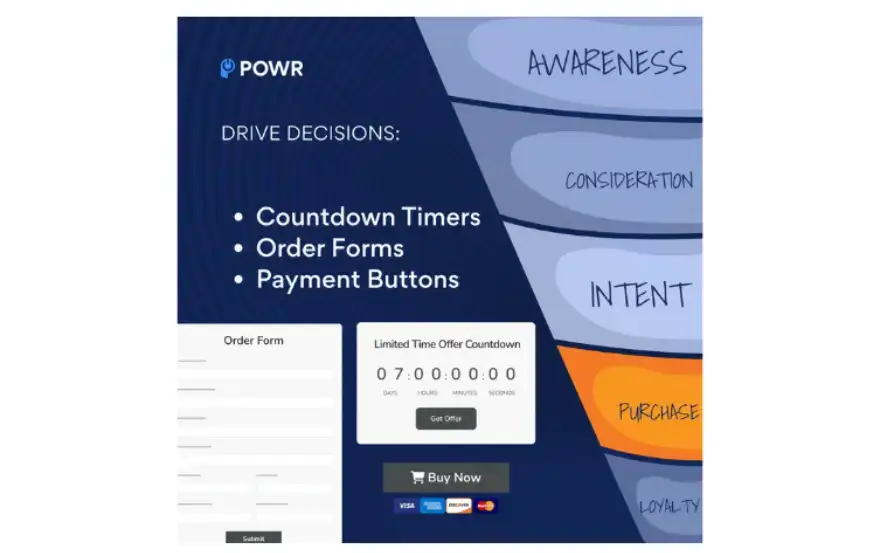
Created in Figma by author
-
How does POWR One apply to the purchase stage?
POWR One has product galleries and shoppable Instagram feeds, and others, but let’s look specifically at the Payment Button as an example in the purchase stage.
Once a site visitor has decided on an item or service to buy, the last thing they want to encounter is difficulty paying.
It’s a must that you remove any payment barriers and provide the simplest experience possible. For example, a one-click checkout experience is optimal for boosting online conversions.
But sometimes, it isn’t that easy. You may have a service business that requires more detail, for example. In that case, use an order form to collect additional information necessary for fulfillment.
And not only can you collect payments with an order form, but you can also set up instant alert notifications and sync your contacts instantly with Google Sheets, among other cool features.
Example order form created by author with POWR One
Finally, set up conditional autoresponder emails to continue communication with your new customers providing them with excellent customer support.
At this stage of the digital customer journey, we’ve taken someone from not knowing your company to being interested in what you offer.
They showed their intent to buy, and finally, they completed a purchase, and you now have an ROI to calculate. Congrats!
But if you thought that’s where it ends, you have missed the customer journey's final and most critical part – the loyalty stage.
Funnel Stage - Loyalty
On average, over 5 million new businesses are created every year. That’s over 13,000 every 24 hours.
What can you do to see that yours will survive and thrive when as many as 90% of startups fail? By building a loyal customer base from day one.
You accomplish this by gathering customer feedback and prominently displaying that information for other consumers interested in buying from you to see.

Created in Figma by author
-
How does POWR One apply to the loyalty stage?
The loyalty stage is so critical, and POWR has considered that by having many website plugins to choose from here.
Two of the most important are the customer feedback survey and star rating reviews. How important, you ask?
An actual review of POWR One on Shopify
Statistics show that 95% of online consumers read reviews before buying a product.
What’s more, this same study shows that displaying reviews increases conversions by 270%!
Review management is a lot of work, but the payoff is enormous. Can you recall the last time you made an online purchase without checking reviews? Neither can I.
People trust reviews because they represent a real-life experience with your product or service. Even negative reviews can have a positive impact if you approach it from a marketing point of view.
It’s impossible to please everyone every time, so when you inevitably receive a negative review, you must acknowledge their poor experience publicly, offer an explanation or resolution, and provide contact information in your reply.
Paying close attention to the loyalty stage of the customer buying funnel is paramount in today’s online purchasing experience. It isn’t a nice-to-have anymore.
It’s a must-have to stay competitive and to stay in business in general.
Conclusion
In this article, we’ve gone deep into the digital customer journey and looked at how to optimize your lower-funnel marketing. And it’s easy to see a funnel as a fixed, rigid structure because it seems like one.
But truth be told, a customer purchase funnel is anything but rigid. It’s a living, breathing thing that is going to evolve. It will twist, turn, and reroute like a river flowing downstream.
You must adapt your funnel to new marketing trends and economic changes. You will have to look into adding AI tools and technologies to your toolbox.
Your customer behavior will adjust, your target buyer persona may change or need adding to, and countless unseen obstacles.
To stay in business and scale, you must close new sales, and you must work tirelessly to keep the customers you have.
And guess who will be evolving with your business, ebbing and flowing with the current right alongside you – POWR One.
About the author:

Mick Essex is the Growth Marketing Manager at POWR. His career spans two decades, primarily in the healthcare industry, with stints in broadcast television advertising and copy editing.
Mick attended the College of Journalism at the University of Louisiana - Monroe. He and his family currently call Lafayette, Louisiana home. Follow him on LinkedIn

